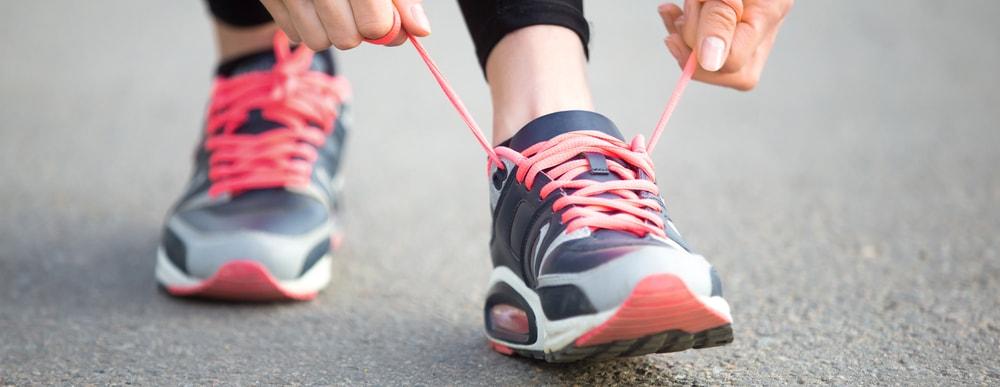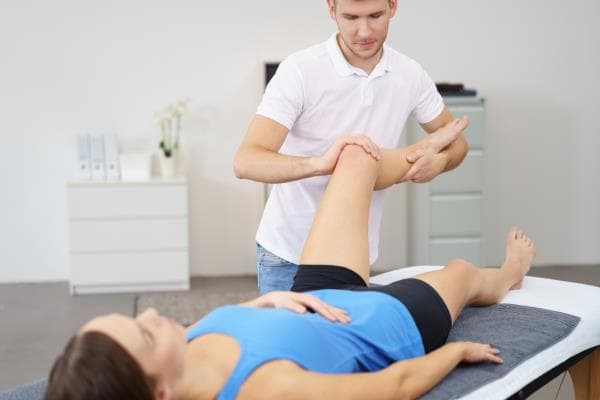Picking up an injury whilst running can sometimes be inevitable, even if you’re doing everything right. We’ve caught up with Michael Core from Össur Webshop – an injury management specialist that offers a range of orthotic solutions for various injuries – to get some insight into how to prevent injury and go on to manage them should they arise.

While running is a great way to stay fit, over time it can have a serious impact on your joints, particularly on your knees.
Before we jump into helping you prevent and manage injuries, we need to explain the science behind the knee.
How can running affect my knees?
The knee joint is formed where the femur (thigh bone) joins the lower leg, the tibia (shin bone) and fibula (calf bone). The patella (kneecap) sits at the front of this joint and controls how the quad muscles work. Between these bones there is cartilage, which acts as a cushion to absorb shock and protect the bones.
If you think of the effect that driving fast over potholes has on the suspension in your car, this will help you understand what happens to your knee under prolonged and continual pressure. The cartilage will gradually wear away over time in a process referred to as osteoarthritis. This bone-on-bone contact can be painful and debilitating and it may also lead to you needing a knee replacement in the future.
Find the right running footwear
Before you go out running, it’s important that you have the right footwear as it can help reduce the risk of injury by providing the right comfort and support while you run. Everybody runs in different ways, for example, the ankle turning in or out, and there are different shoes to help manage this as well as ones with varying padding and insoles. When looking for trainers, you need something that is cushioned and protects your feet.
A sure fire way to get the best running trainers for you is to get a gait analysis done. A standard gait analysis is typically free of charge and will tell you what running your running ‘pronation’ is. Basically this means how you foot sits on the floor when you run. Types of pronation are ‘overpronation’, ‘underpronation’ and neutral. Having the correct running trainers for your running style will make the world of difference.

Pick a training plan
The next step to take is to find a suitable training plan for you. Doing some research will help you find a suitable training plan, and there are a lot of options out there depending on what you’re trying to achieve. Regardless of what you’re trying to conquer, all plans generally work in the same way by gradually building up your running ability.
Make sure you don’t overdo it
There may be some days that you think you can do double what your training plan recommends; however, it’s important that you stick to your plan to avoid injury.
Overdoing any kind of exercise can result in an injury that could take you out of action.
Be sure to rest
When you put your body through an exercise programme, your body needs time to recover so you can do it again. Resting is as important as running when it comes to improving and maintaining your fitness. Your chosen training plan should have rest days included so make you stick to them.
Know when to stop
Pain in your body is a sign that you’re doing something unnatural so don’t try and push through it as you could end up causing further injuries. For instance, if you sprain your ankle and keep running on it, you could exacerbate the damage to the ligaments, resulting in a longer spell on the sidelines, some physio and maybe even surgery to correct it. However, stopping immediately when you’ve sprained your ankle will only result in a couple of days off. If you suspect you’ve sprained your ankle consult a doctor who will be able to give you the appropriate treatment.
When starting any new form of exercise, it’s important to know your limits and ensure that what you are doing is not bad for your health. If you ever have any doubts then you should speak with a medical professional. Injuries are likely to occur even if you’re doing everything you can to prevent them, so it’s important you make a promise that you’re going to be honest with yourself, especially if you’re serious about running.

How to manage a running injury
Following an injury, there are a number of steps to consider both in the immediate aftermath and throughout your recovery.
1. Stop what you’re doing
If you’re injured, then stop. Continuing to run while injured could cause more damage.
2. Adopt the RICE protocol
When you’ve had an injury, it’s standard to rest, ice, compress and elevate:
- Resting allows the body to repair itself and naturally heal
- Ice manages inflammation and offers a degree of pain relief
- Compression is typically achieved through bracing but can also reduce inflammation and provide pain relief
- Elevate the affected area above the level of the heart to reduce blood flow and, in turn, reduce inflammation
3. Seek medical advice
If an injury warrants medical attention, you should seek this immediately to minimise the risk of the injury worsening. Otherwise, you should seek a professional diagnosis if the RICE protocol doesn’t work after a few days. You may be sent for an X-ray, an MRI or simply be referred to a physiotherapist, depending on the severity of your injury.
4. Attend physiotherapy
Physiotherapists are there to get you mobile once again, working with you in the management of your condition through specific and tailored exercises and stretches. Sessions are designed to help strengthen the affected region, which not only allows you to return to full fitness faster, but also reduces the risk of the injury happening again.
Typically, once you’ve injured an area there is an inherent weakness. It’s important to work on strength and conditioning so that you don’t end up back in the physio room again.
A physiotherapist may also suggest yoga or pilates as a means of building your strength and having a strong core.

5. Get a brace
Bracing is becoming more mainstream and is used widely within the NHS and physiotherapy practices. The idea of a brace is to extend the life of the physiotherapy session beyond those 30 minutes, offering patients a device that offers compression, stability or both. This additional level of protection can minimise the risk of an injury recurring as well as giving the patient the confidence to return to action.
6. Undergo surgery
In extreme cases, surgery may be unavoidable. Unless surgery is required urgently, you will sit down with your surgeon to discuss the options available to you. Sometimes surgery may be the only option and sometimes conservative treatment could also be offered. The final decision will be left down to you.
Where surgery is required, recovery will vary depending on the procedure carried out, likewise with post-surgical care. In most cases following surgery, there will be a period of immobilisation to help protect the affected area and ensure you don’t undo all the work done by the surgeon. After this, you’ll probably go down the route of rest, physiotherapy and bracing, or a combination of all of these.
It is important not to dwell on your injury. Instead focus your efforts on your rehabilitation and getting back to full fitness instead. A positive mental attitude can be just as important as the right treatment. If you are ever unsure about the severity of an injury or how to best manage it then speak with a medical professional.



















